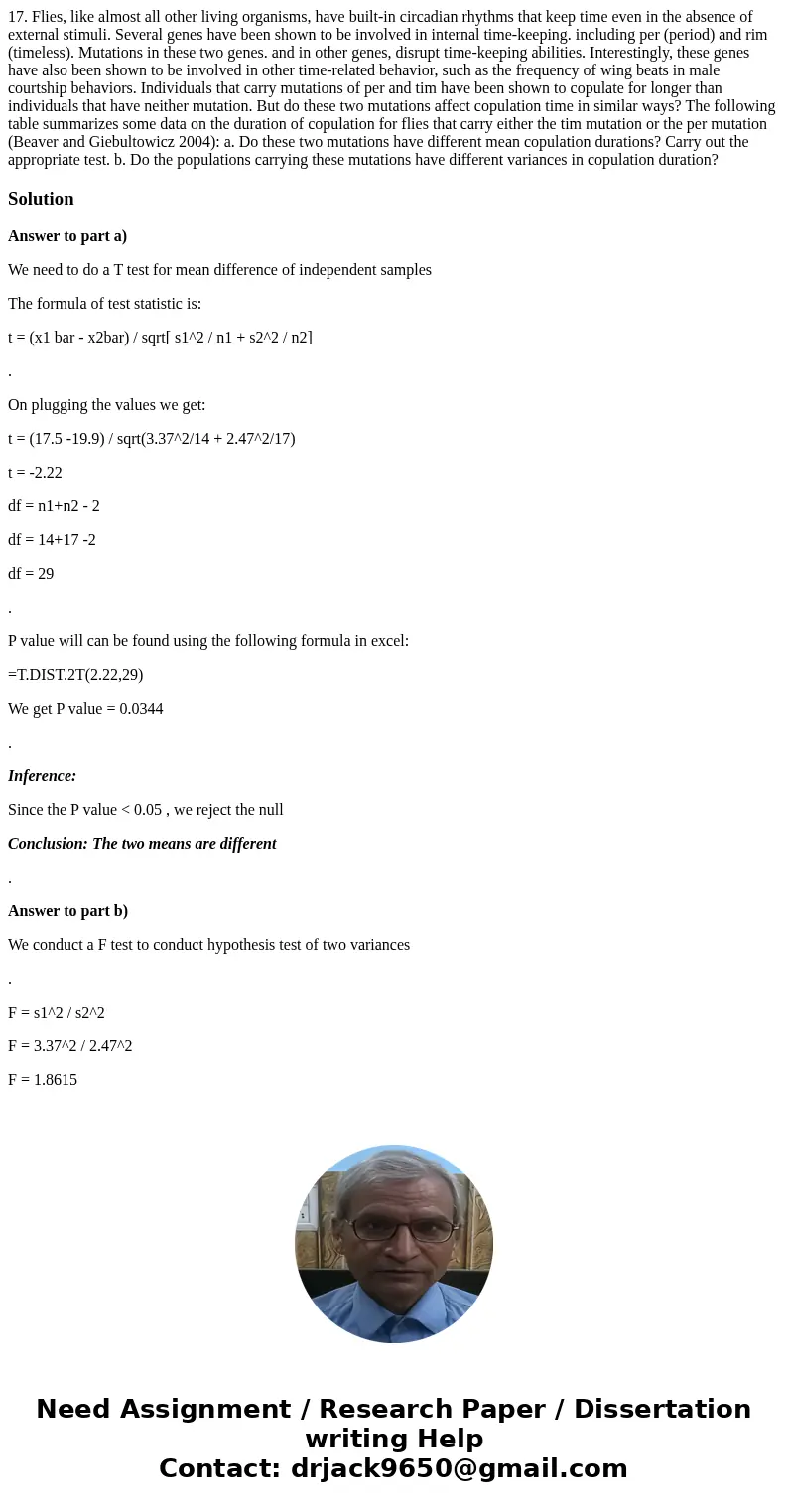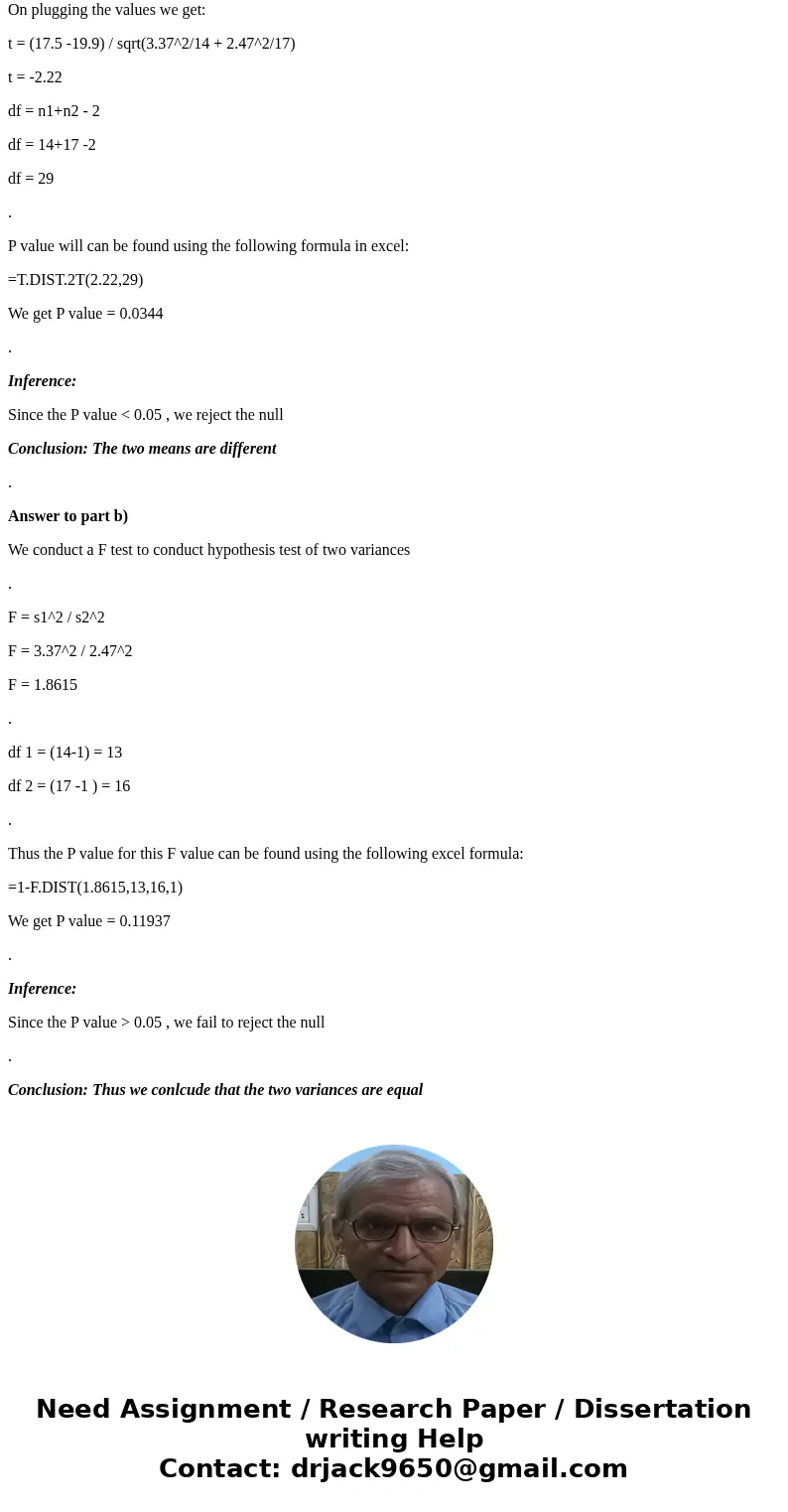17 Flies like almost all other living organisms have builtin
Solution
Answer to part a)
We need to do a T test for mean difference of independent samples
The formula of test statistic is:
t = (x1 bar - x2bar) / sqrt[ s1^2 / n1 + s2^2 / n2]
.
On plugging the values we get:
t = (17.5 -19.9) / sqrt(3.37^2/14 + 2.47^2/17)
t = -2.22
df = n1+n2 - 2
df = 14+17 -2
df = 29
.
P value will can be found using the following formula in excel:
=T.DIST.2T(2.22,29)
We get P value = 0.0344
.
Inference:
Since the P value < 0.05 , we reject the null
Conclusion: The two means are different
.
Answer to part b)
We conduct a F test to conduct hypothesis test of two variances
.
F = s1^2 / s2^2
F = 3.37^2 / 2.47^2
F = 1.8615
.
df 1 = (14-1) = 13
df 2 = (17 -1 ) = 16
.
Thus the P value for this F value can be found using the following excel formula:
=1-F.DIST(1.8615,13,16,1)
We get P value = 0.11937
.
Inference:
Since the P value > 0.05 , we fail to reject the null
.
Conclusion: Thus we conlcude that the two variances are equal


 Homework Sourse
Homework Sourse